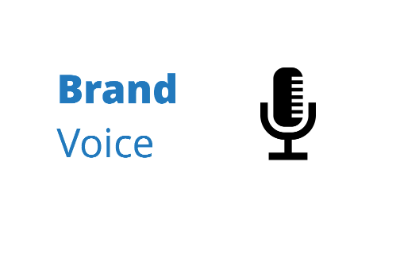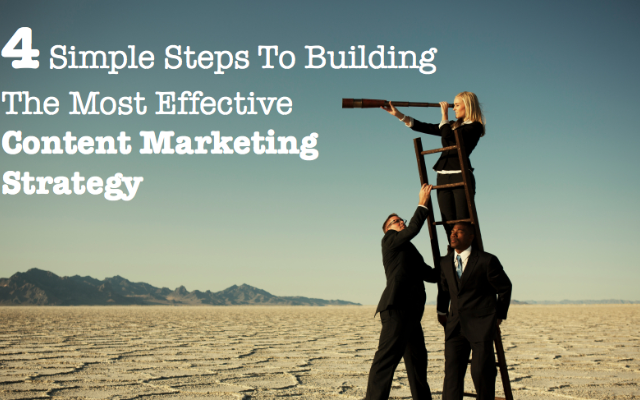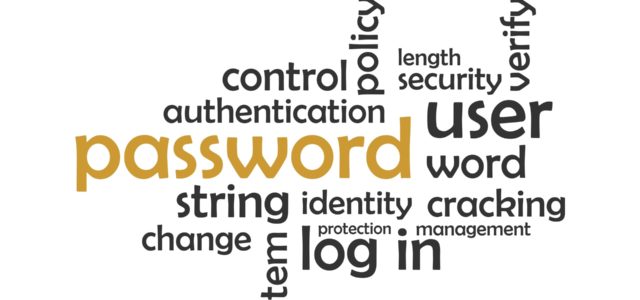Content Marketing ROI Starts With A Content Marketing Strategy. Nearly 90% of B2B marketers say that content marketing is now one of their highest priorities. But only 1 out of 3 companies has a documented content marketing strategy. Would you fly by the seat of your pants for any other marketing channel? Of course not.
Over the long run, content marketing has been shown to deliver the highest quality leads at the lowest cost of any digital channel. Without a documented plan, though, it’s impossible to effectively measure the ROI of your efforts. That’s why today’s B2B marketers need a strong content marketing strategy in place. Not only to align their teams and build a business case for investment, but also to connect the dots to lead generation and revenue.
1. BUYER PERSONAS
With B2B content marketing, you need to understand your buyers at a different level than you normally would for other transactional marketing channels, like your website or your PPC advertising. To get real ROI from content marketing, you need to be an invaluable resource for your buyers, which means you need to answer every question before they’ve thought of it.
The best way to map out your buyers, who they are, where they’re coming from, and what they care about, you’ll need to create Buyer Personas.
Buyer Personas are depictions of your best customer segments, with sample data of their demographics, psychographics, and digital habits. How old is your typical buyer? What motivates them? How do they make purchasing decisions? Where do they go to conduct research? Which peers do they lean on for advice?
Once you’ve created 3-6 Buyer Personas per product/service or industry that you serve, you can map your Buyer Journey.
2. BUYER JOURNEY
The Buyer Journey is a new concept, and it’s one of the most misunderstood in marketing today. The “funnel” doesn’t apply as a B2B marketing concept in today’s digital world. The path to purchase is no longer a straight line, entire teams now make buying decisions, and buyers can digitally “jump” back and forth between the 6 key buying stages.
What questions are your buyers asking at each stage? Which online social communities do they go to for answers? What content formats do they prefer at each stage? These questions help to map out your online Buyer Journey.
The first stage of the Buyer Journey is Awareness – that is, the buyer becomes aware that they have a challenge to solve, not that they become aware of your solution (yet). Once they conduct some preliminary research, they’ll begin to consider various solutions to their challenge. This is the high-learning phase of the Buyer Journey.
Once the buyer passes through the Consideration stage and decides that there are a few solutions out there that fit her needs, the third stage is Comparison. Which solutions have which features, what are the pricing models, and how is the post-purchase support?
Once the buying team has decided on the preferred solution(s), the Evaluation stage follows. This is where she has the opportunity to gauge how well this solution actually works, either through case studies, demos, trials, or a pilot.
The Comparison and Evaluation stages are the high-emotion phase of the Buyer Journey, so the pressure is on to make a genuine connection. If the evaluation goes well, it’s on to the Decision stage, where the buying team’s final approval is earned. If it doesn’t, we’re back to the Comparison stage.
For most firms, once a buyer hits the Evaluation Stage, they have landed at the top of a typical Sales Funnel, and it’s on the Sales Development Rep or Account Exec to close the business. Once the prospect becomes a customer, the buyer transitions into the 6th stage of the Buyer Journey, Loyalty, and the ball is back in Marketing’s court to generate advocacy.
With your Buyer Journey mapped out, it’s time to define your Goals & Mission.
3. GOALS & MISSION
What do you hope that content marketing will help your team achieve?
High-level goals for content marketing could be demand generation, building brand awareness, improving brand perception, lead generation, sales enablement, or customer retention. Document your goals, and assign measurable objectives.
Once you have your content marketing Goals, it’s time to define your content marketing Mission. Why are you the best resource for your buyers? What is it about your thought leadership and commercial insights that will make your firm unique?
The easiest way to define your Mission is to ask yourself why your solutions are important for your buyers, and then look inward to find your differentiator.
If my firm provides BPO solutions, and my audience the Chief Operating Officer, what is it about my company’s perspective that puts our firm on a different playing field than the competition? It might be our history, our list of clients, our subject matter experts, our culture, or something else entirely.
Find the thing that makes your story unique, apply that perspective to helping your target audience answer their questions at each stage of the Buyer Journey, and you have your Mission.
Now you’re ready to document your Brand Voice.
4. BRAND VOICE
Just as repetition is key to advertising success, consistency in brand voice is crucial for content marketing success. Your team is going to be producing a lot of marketing content, and you may also rely on content marketing agencies. Unless your Brand Voice is documented, your content marketing assets will be inconsistent, watering down your message and reducing the impact of your campaigns.
 When it comes to Brand Voice, it’s not just about having a brand archetype or deciding whether your brand is Personable & Friendly vs Corporate & Professional.
When it comes to Brand Voice, it’s not just about having a brand archetype or deciding whether your brand is Personable & Friendly vs Corporate & Professional.
You also need to define a brand lexicon; what are the specific words that will accelerate each stage of the Buyer Journey?
You need a brand emotions; what emotions are you trying to trigger at each stage?
You need brand imagery; does your content feature illustrations, icons, or a specific photography aesthetic?
Having your Brand Voice documented ensures that anyone on your team can jump in and create content, and that every asset will be consistent, maximizing impact.
NEXT STEPS
Take the time, energy, and resources to craft a strong content marketing strategy. You wouldn’t go into battle without a gameplan, and you shouldn’t launch a new marketing channel without a strategy.
And if these four steps seem daunting, fear not! Our team is more experienced than anyone in the world at helping B2B firms create the right content marketing strategy.
Which aspects of your content marketing strategy are you struggling with?
Article by channel:
Everything you need to know about Digital Transformation
The best articles, news and events direct to your inbox
Read more articles tagged: Content Marketing, Customer Journey, Featured










